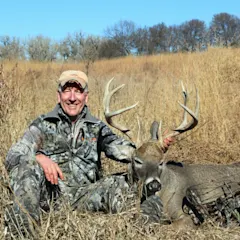It’s been a long wait. But September is finally here, which means early bow seasons have started or are about to start across the county. And that means the annual whitetail rut—the peak event of most hunters’ entire fall—is only weeks away.
It means one more thing, too: It’s time for F&S to pick the 7 best days of the whitetail rut. When we’re looking forward to November, it’s easy to remember only the hottest action of the rut, when bucks chase does willy-nilly through the timber. But as we all know too well, not every day of the rut is packed with action. Some days are better, even way better, than others. So, the question is, which days?
To that end, I talked to some of the country’s top biologists, outfitters, and whitetail experts and factored in some of my personal opinions, forged from 50 years of deer hunting, to predict which days will have the most electric action. After a long offseason, any day might seem like a good one to be deer hunting. But if you want to see the biggest bucks tearing up the woods and throwing caution to the wind, these are the best days—the 7 can't-miss, do-whatever-you-have-to, must-hunt days of the 2024 whitetail rut.
Best Day of the Rut No. 1: October 24

Thursday, October 24th is going to kick off Scrape Week this year—that 7- to 10-day period when bucks are not only checking their scrapes nonstop, but doing it during daylight hours. Scrape Week usually ends right around Halloween, and the whole period should offer good hunting, but the beginning of it sort of kicks off the rut in terms of mature-buck activity, and it's an exciting time to be in a tree stand.
I have a particular soft spot for the 24th because on this exact date, a whole lot of seasons ago, I tagged my first Pope & Young whitetail buck. And that whitetail is a perfect illustration of why this day is such a great one to be in the timber. The buck was one I’d been watching (this was years before trail cams) since July, as he fed in a secluded alfalfa field. By mid-October his rubs and scrapes were all over that field and the adjoining woods, and I set a tree stand on one of his favorite entry trails. On the afternoon of October 24th, the field filled up with feeding does and fawns and a young buck. Then, just at prime time, my buck appeared, checking a scrape line on the field edge and nosing around the does. When two of the does jumped the fence and trotted toward my stand, the short-tined 12-point followed and gave me a 10-yard shot.
It was the perfect example of a late pre-rut hunt: A mature buck getting increasingly active and feeling his oats, checking scrapes incessantly, but sticking to his core area. If you know of a good buck behaving the same, get out there today and put a tag on him.
Related: How to Hunt Scrapes During the Pre-Rut
Best Day of the Rut No. 2: November 2
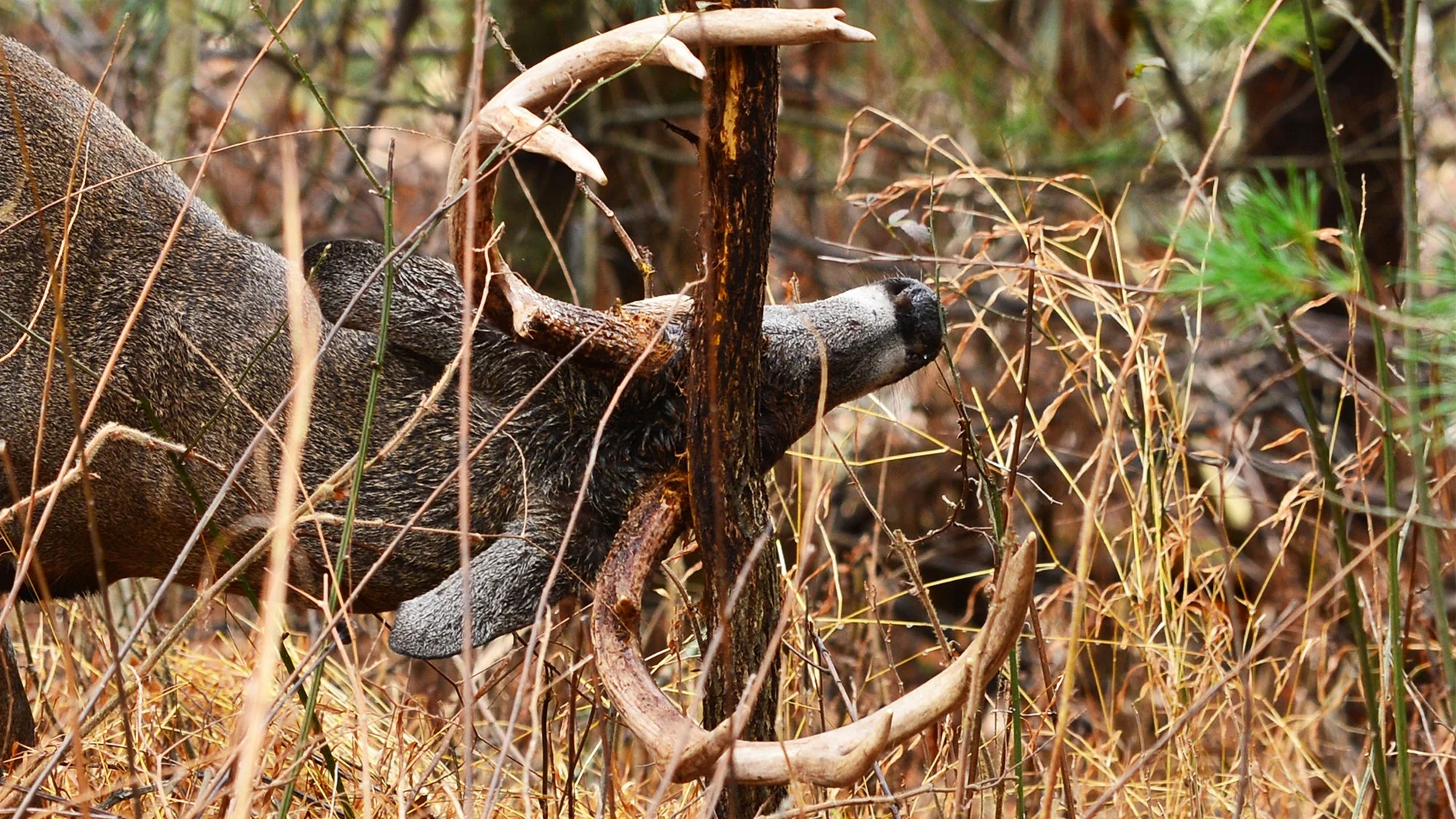
A lot of whitetail hunters think that as soon as we flip the calendar to the 11th month, things are gonna instantly bust loose. While I’ve seen some pretty crazy early-November movement, much more often, the rut sort of tip-toes into a higher gear, with the first handful of days featuring good activity, but not the unhinged chaos we’re all expecting. It may seem counterintuitive, but as much as I like to watch whitetails acting goofy, when it comes to actually tagging a nice buck, I kind of prefer the tip-toeing.
Make no mistake, if a doe or two has come into estrous in your area, things might get a little wild today. But if it’s a tad early (and it will be in most areas), you’re going to see bucks moving well, working off steam at scrapes and along rub lines, and pestering does. This increased activity makes them extremely vulnerable to rattling and calling, and I’m never in the woods without my grunt tube and rattling antlers. I’m also extending my morning sits closer to midday, as increasingly restless start returning to their bedding areas much later. In short, even if does aren’t quite ready to play the game yet, this is an excellent day to witness great yet still somewhat predictable buck activity, at a time when even the biggest deer are vulnerable to calling. So, get out there and talk to those bucks.
Related: How to Hunt Buck Rubs During the Rut
Best Day of the Rut No. 3: November 5
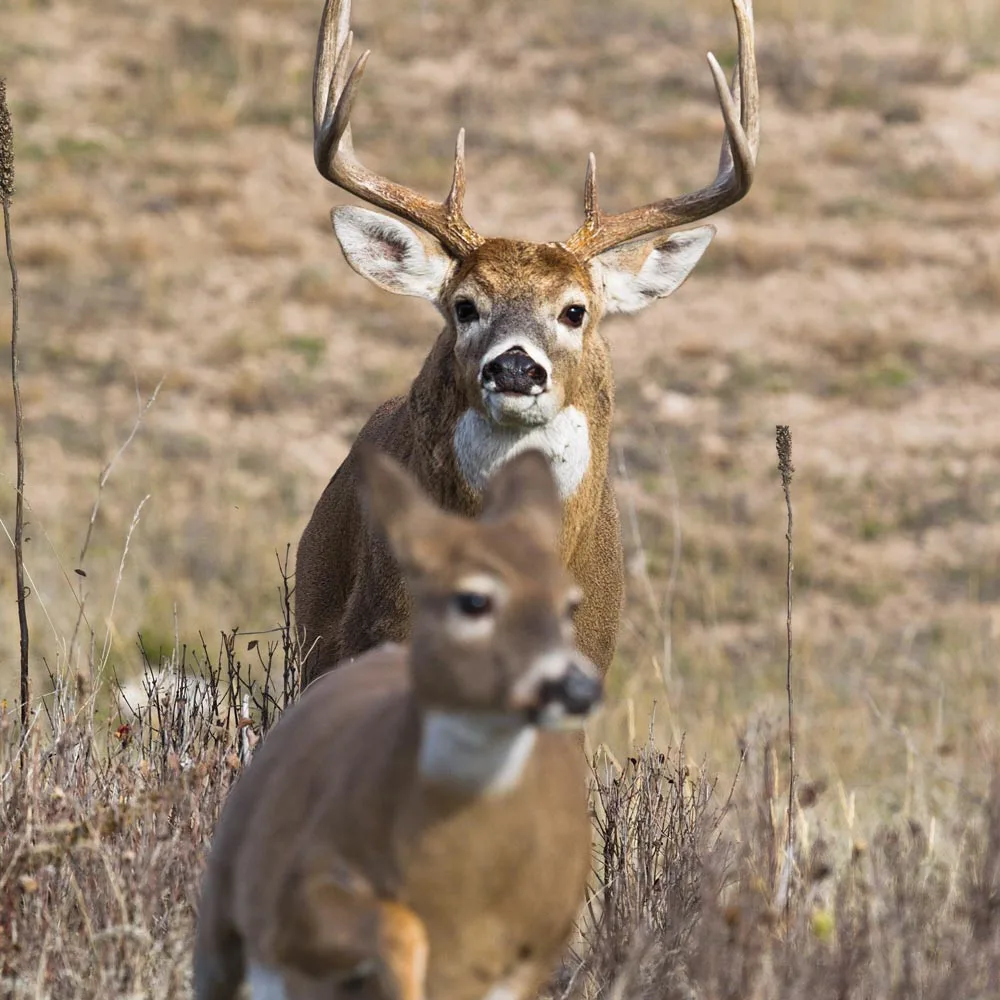
Technically speaking, the seeking and the chasing parts of the rut are both encompassed in one phase: the seeking-and-chasing phase. But there's no doubt that it starts with more seeking and ends with more chasing, so I tend to think of them separately. And I'm betting that November 5th is the day when more seeking becomes more chasing—and that this a day when putting in a ton of woods-time is a very good idea.
I'll admit that there's another reason I like the 5th: It's my birthday. I have celebrated this date in a tree stand pretty much every fall since I can remember, and I can't recall ever being disappointed in terms of the buck activity. Ironically, I have never tagged a buck on my birthday. I’ve shot several on the 4th and a couple on the 6th, but to wrap a tag around a nice whitetail on my birthday is a goal that’s eluded me for a really long time. But hopefully not much longer; I'm going to spend as many hours as possible in a stand on the 5th. I'll take a short break to vote, of course, but then I am hustling right back to the deer woods.
You should, too. Today is apt be just about perfect—a time when buck activity is peaking but not quite so crazy that it's hard to get a buck stopped for a shot.
Best Day of the Rut No. 4: November 8

Now is when things get crazy. Regardless of how your candidate(s) fared in the election a couple days back, the deer woods are the place to be today. If you picked a bunch of winners, there’s no better place to celebrate than a tree stand. And if you were less than successful, what better therapy is there to sit in the timber and enjoy the kind of deer action we’ve all been dreaming about since last November?
This is the absolute peak of the chasing phase, when bucks are running at any doe they see and checking to see if she’s ready for breeding. This can be one of the most exciting times to be in the timber, as bucks will pursue any doe they see, and often run to the sounds and scents of a chase. The two knock-down-drag-out buck fights I have witnessed have both occurred during this phase, so bring your rattling antlers.
Bucks are covering a ton of ground right now, so you'll want to take a stand in a good funnel between doe feeding and bedding areas and wait it out. And if a doe or two come bolting past with their tongues hanging out, get ready. There might be several bucks in tow—and keep in mind that the biggest one will usually bring up the rear.
Overall Best Day of the 2024 Rut: November 17
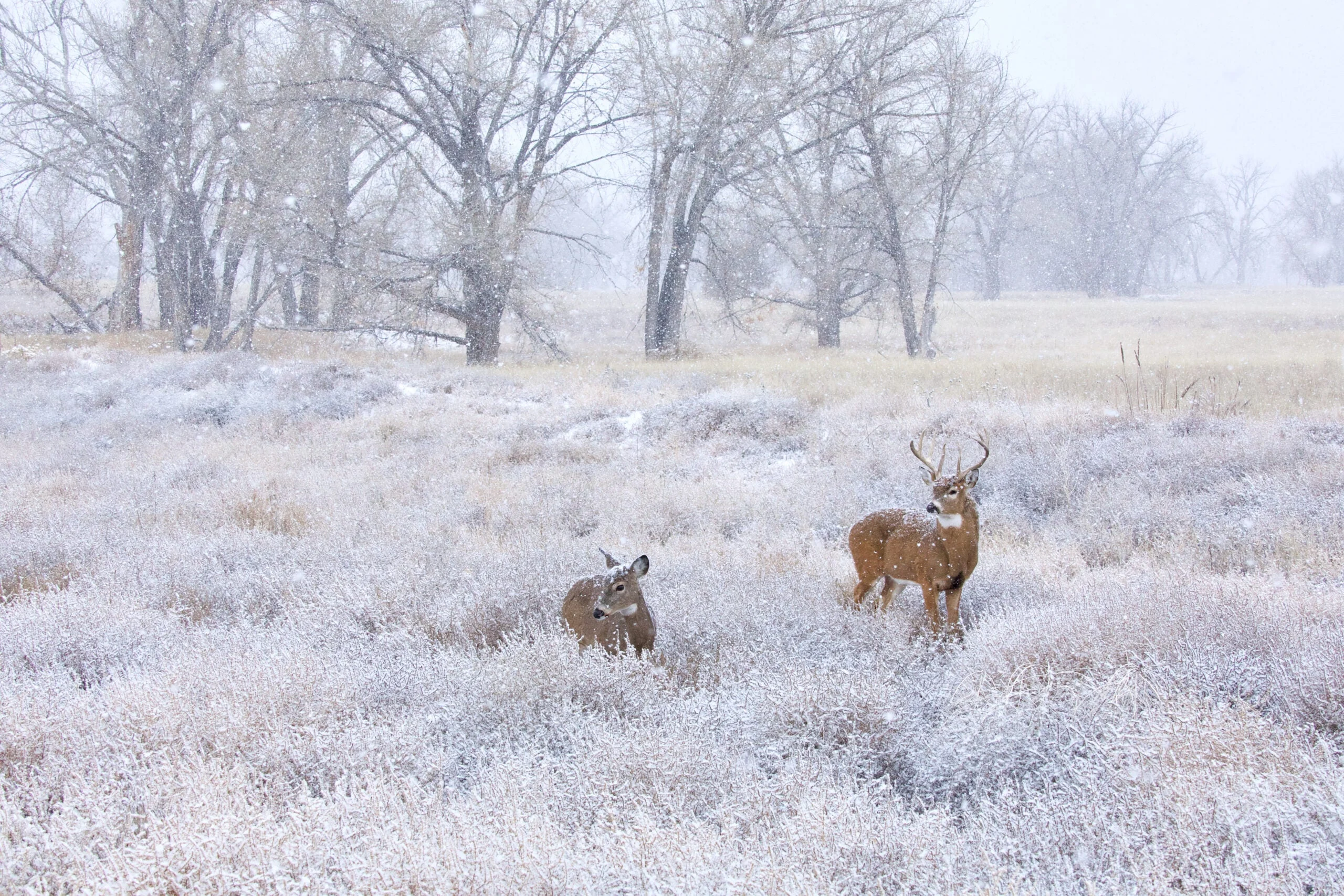
Though most rut days feature some degree of action, obviously the ones where you see a bunch of deer are usually the most exciting. And across much of whitetail range, this day should be one of those, thanks to a unique combination of deer and human behavior. On the deer side, the rut is just past the peak breeding—or lockdown—point in most areas, which means that bucks are still crazy about breeding, but the number of available does is starting to ebb. This forces bucks to work a little harder to find mates and, of course, ramp up their movement in the process.
On the people front, firearms seasons are open across much of the country, which translates to increased human activity that typically results in good deer movement. In short, bucks should move well, either because they’re searching for does, or because they’re fleeing from hunters—and sometimes both at the same time.
While some hunters curse the presence of human competition in the deer woods, my background helps me accept it and adapt. I cut my deer huntering teeth in central Wisconsin, where hunter and deer numbers were among the highest in the state. If you didn’t learn how to adapt to hunting pressure, you didn’t kill many bucks, and we learned in a hurry that the rut goes on even when the orange army hits the woods. Two great strategies are to either sit in a sanctuary area when deer behavior will go on pretty much as normal and where deer are apt to flee if bumped. Or sit in a funnel that leads to one of these areas. Either way, you should see a lot of action—which is why this is my pick for the No. 1 best overall day of the 2024 whitetail rut.
Related: The Best New Rifles of 2024, Tested and Reviewed
Best Day of the Rut No. 6: November 28
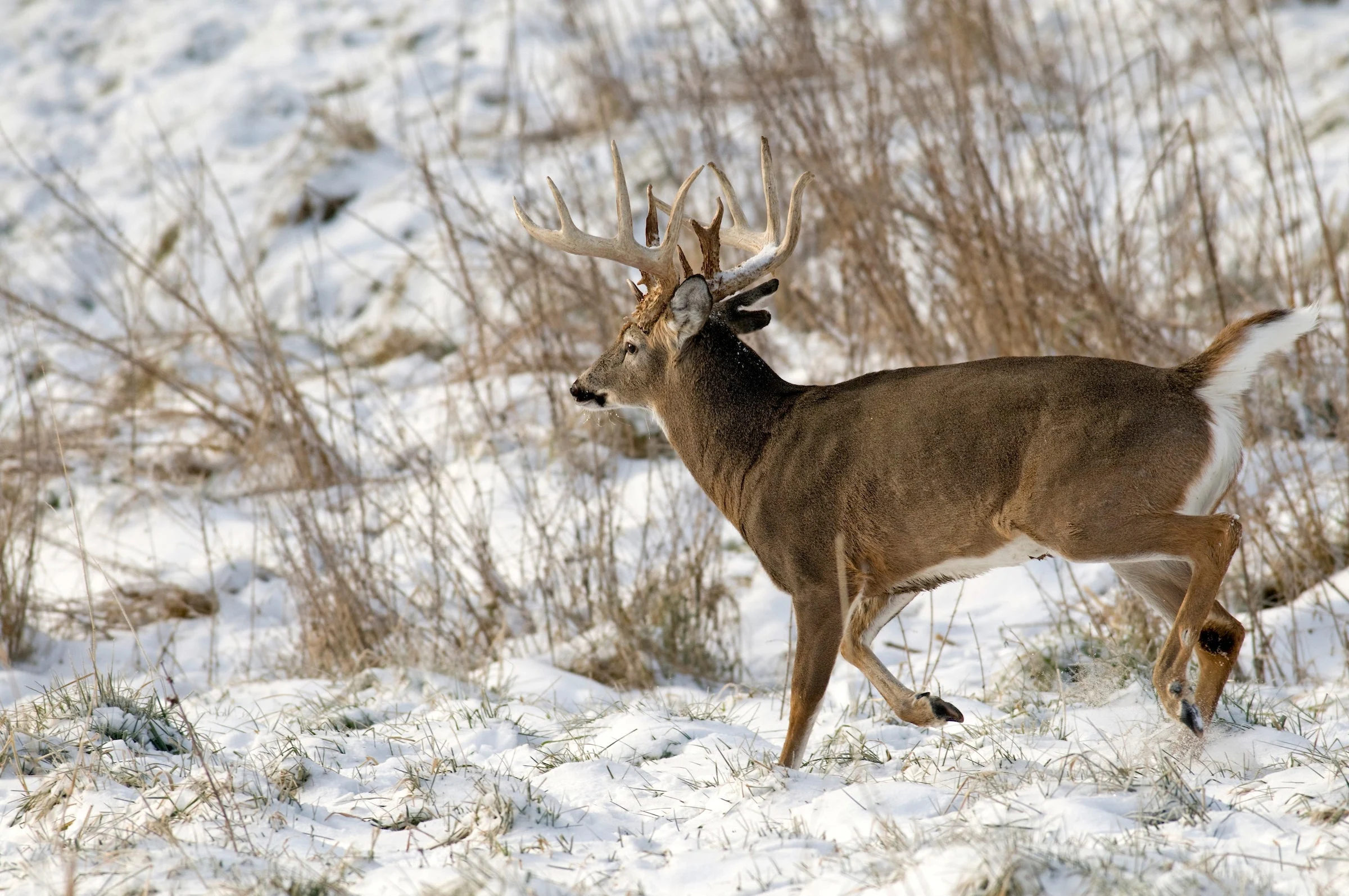
With November winding down, it’s pretty easy to want to take a break from the tree stand if you haven't filled your tag at this point. After all, some of the big bucks you were after have no doubt been tagged by someone else, and with the peak of the rut firmly in the rearview, you might feel like the big show is over for another year. Well, it isn't. So, do your best to fight those feelings because as unlikely as it might seem, your chances at tagging a true whopper might be at their very best right now. Here's why.
First, a reality check. You’re no doubt going to see fewer bucks now than you did only a few short weeks ago. The junior bucks (all the yearlings and a share of the 2½ year olds) are, for the most part, tuckered out and tired of this rutting stuff. All they want to do is rest up and eat. But mature bucks are still actively trolling for does. These older males are the only ones with the stamina to keep rutting when all their buddies are ready to nap, and they’re also the most likely to have the survival skills to make it through the chaos of firearms season. So get on out there, because what better way is there to celebrate Thanksgiving Day than by tagging the buck of your dreams?
Related: 54 Expert Tips on Hunting Late-Season Deer
Best Day of the Rut No. 7: December 6
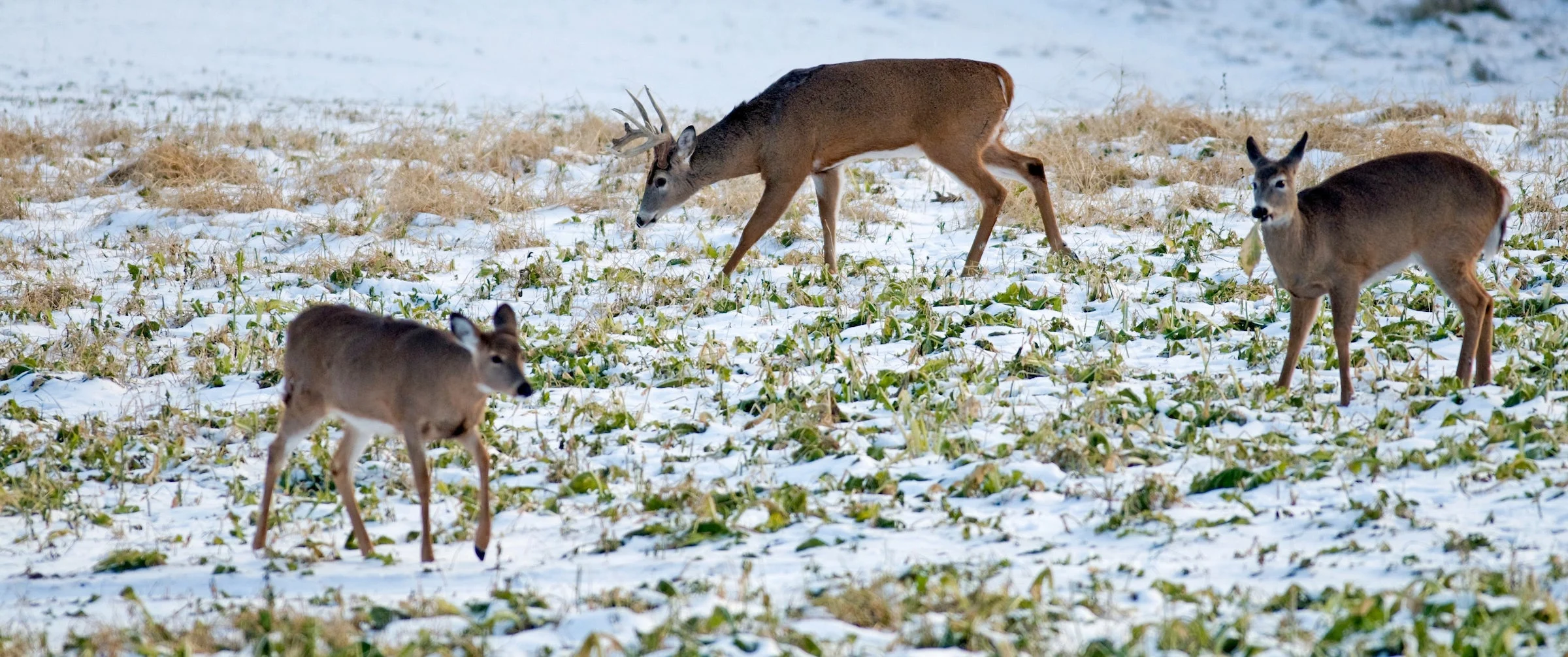
I love November as much as the next deer hunter. But I never view December as the ugly step-sister of the 11th month. Some of my absolute best and most memorable hunts have occurred when snow blanketed the ground, the thermometer was doing its best to bottom out, and most hunters had given up on the deer woods and called it a season. Instead of hanging it up, I always get a second wind in December and attack the woods with a renewed vigor.
For starters, the hunting is silly-simple now: find the food and you’ll find the deer, including mature bucks that have become deadly serious about stuffing their bellies with the highest-quality forage they can find. Many years, I’ll see more trophy-class bucks in December than I do during the peak of the rut.
The icing on the cake is that these bucks aren’t just interested in eating, they’re actively seeking any late-cycling doe or first-time cycling doe fawn and will behave much in the same way they did only a month ago. And the best news? All this late-rutting activity is focused on the high-quality food sources you can locate through a few midday scouting trips, where you'll not only find feeding sign, but also the same rubs and scrapes you sought in October and November. Plus, it's the last best day of the 2024 whitetail rut—so you need to get out there. Do your food-source homework and today should be an excellent day to wrap your tag around a heavy set of antlers.


